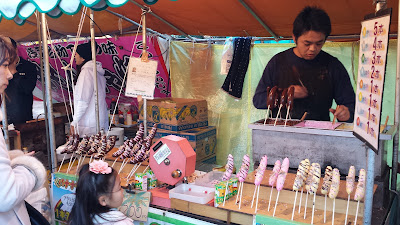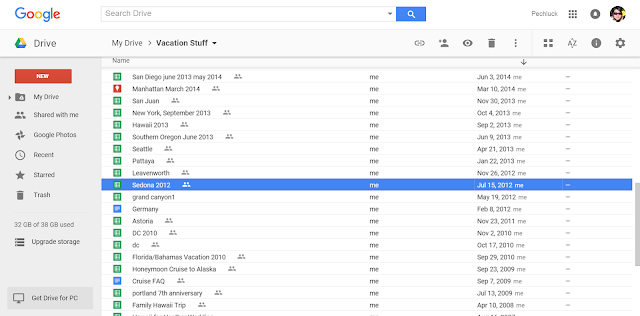When visiting anyplace on vacation, I always look at the local events calendar to see if there are any festivals or special happening during my trip. This has lucked out in me finding out about third Friday art walks, or a small town parade, or a local festival occurring. For my trip to Japan in December, besides coinciding with Christmas and New Year’s, it turned out that the first few days we were in Tokyo would also be during the Hagoita Ichi Winter Festival at Sensoji Temple in Asakusa.
Japan has many festivals all year round, and some are very localized to a region or even a town or neighborhood. The Hagoita-Ichi is an annual festival held in Asakusa, which is an older neighborhood in Tokyo. Asakusa is considered part of the old neighborhoods in Japan because it has a more traditional atmosphere and doesn’t have the bright lights and stores like you would find in more bustling modern areas. The district has also been around even before it was part of Tokyo, such as in the 1600s where in the Edo period it was an entertainment district and still considered outside the city limits.
Today Asakusa is most famous for Sensoji Temple, although it is also the area for Tokyo Skytree and Kappabashi Street (a street of stores dedicated to the food industry including a chance to view and buy the plastic food replicas). Sensoji Temple is Tokyo’s oldest temple, founded in 645 for the goddess Kannon. When entering the temple you will go through the main gate, called the Kaminarimon, or Thunder Gate. It was built in 942 and erected at this location in the Kamakura period (1192–1333). Here, you will find a giant red lantern that everyone will be walking under while on either side Fujin the Shinto god of wind and Raijin the Shinto god of thunder look on.
Kaminarimon Gate, the first gate of Sensoji Temple. The god of thunder is standing on the left and the god of wind on the right. You can also see a special sign on the left noting the Hagoita-ichi
Meanwhile, this giant lantern serves as a symbol for Sensoji Temple, Asakusa, and Tokyo. The gates here have unfortunately been burnt several times so they are not original. The lantern you will pass under is a restoration that in 2003 was donated by Panasonic and is maintained every 10 years. You can also see because of Hagoita Ichi there is a special sign to the left noting the event during my visit.


Right after passing through the gates you will then see a shopping street called Nakamise Dori. Alongside Japanese souvenirs you’ll also see lots of different traditional local snacks being offered by the vendors. You can see special decorations above the crowd like an extra large New Year’s ema board with the monkey (for the Year of the Monkey) and also the paddle for Hagoita-ichi thanks to the time of year of my visit.
If you follow Namakise Dori down, you will reach the second gate, Hozomon Gate, beyond which is the temple’s main hall and a five storied pagoda as well as other halls.
It’s a lot more spread out past Hozomon, so you can enjoy the beauty of the temple without being so packed together with people like on Namakise Dori. You might see near the Main Hall people getting fortunes. They have English ones too if you want to try your luck. If you get a bad luck fortune, follow the others in tying your paper to the metal wires they have so it will wait here instead of attach itself to you. If it’s good, you can also tie it here so it has stronger effect, or take it with you. Other sights may be people gathering to breathe in the incense smoke to ward off illness before entering the Main Hall to offer prayers.

Moon rising over the Main Hall of Sensoji Temple
If you walk just to the left/west of the Main Hall, you will find several other halls that house various images of Buddhas or other disciples.
The Five Storied Pagoda is hard to miss.
There are some great specific Japanese snacks you can find on Nakamise Dori – I’ll highlight that in next week’s Travel Tuesday post. We did run into some tents of food vendors that are not usually here but were present because of Hagoita Ichi just outside Hozomon Gate. They are typical of the food vendors that set up stands just to the outside of the temple during festivals.




We also took some time to admire all the 50 some vendor tents of the Hagoita-Ichi, which is held annually from December 17-19th, 9 AM – 9 PM. Hagoita means wooden paddle or battledore, and although traditionally used to play a game called Hanetsuki that’s similar to badminton, the paddles you see at Hagoita Ichi are ornamental.
They are often painted, and then handsewn and stuffed for a pillowy effect to the decorative characters of kabuki actors, women in gorgeous detailed kimonos, gods and goddesses, symbols of the new year like the incoming year of the Monkey, or other celebrities.
If you look carefully you’ll see basketball players and soccer players, even an ice skater, Hello Kitty and Doraeman!
The Hagoita are considered good luck charms that apparently are a “board to bounce back evil.”
Not all the vendors sell hagoita although most of them do – there are also other New Year auspicious decorations at a few, such as handpainted kites – so gorgeous. All the colors were so spectacular.
Admission to the Temple is free, and is a definite must visit if you are in Tokyo, whether there is a festival going on or not in my opinion. This is an extremely popular temple, but the crowds are manageable and orderly, and there is so much to see in terms of Japanese culture that is old and new all in one place.
Have you been to Sensoji Temple in Asakusa? Have you seen photos of that famous Sensoji lantern before or heard about this temple? What do you think of the Hagoita?
For more details on Sensoji Temple or Hagoita Ichi, I used these references:
- Asakusa Kannon Sensoji official site
- Japan Guide’s article on Sensoji Temple
- Japan Travel’s article on Asakusa’s Traditional Hagoita Fair
- QoolJan’s article on Hagoita-ichi, a Traditional Japanese Winter Festival
Here’s a summary of my Japan Travel post series:
- Guide to Planning a Trip: Research
- Guide to Planning a Trip: Mapping
- Hagoita Ichi Winter Festival at Sensoji Temple, Japan
- Japanese Treats at Temples and Shrines
- Winter Illuminations in Tokyo (Winter Season – November – February!)
- Snow Monkeys in Hot Springs
- Onsen by Mount Fuji covers Onsen 101 and how we loved our stay at Lake Kawaguchiko
- Dining at a Ryokan a look at what a traditional dinner and breakfast might be during a ryokan stay
- Visiting Cup Noodles Museum in Yokohama (just outside Tokyo)
- Visiting Shin Yokohama Ramen Museum
- Kyoto Temples and Shrines (walking tour starting in Higashimaya with stops especially at Kiyomizudera Temple, Kodaji Temple, Heian Shrine)
- Kyoto Temples in Arashiyama
- Kyoto Tofu
- Kyoto Famous Sights of the Kinkakuji (The Golden Pavilion) and Fushimi Inari (Red Torii Gates)
- Famous Signs of Osaka and eating Osaka Food specialities like okonomiyaki, takoyaki and kushikatsu
- Visiting Himeji Castle, the famous white castle in Japan
- Fun at Japanese Cafes and More including Maid Cafe, Cat Cafe; theme parks of J World and Namja Town, a geeky stop at Kanda Myojin, and Ghibli Museum
- Japan Eating Checklist is my top 25 list of things to try to include as an eating experience when visiting Japan
- New Year’s in Japan: Oji Fox Parade, and some photos of a Meiji Shrine visit on New Year’s Day













What a fun day…I love how you got the modern and traditional in one visit. The pictures might be deceiving, but it looks like it wasn’t too cold out. Hopefully that was the case for you!
One of my bucket list. Love the pics. 🙂
Great pictures Pech! Thanks so much for sharing, it’s like we are on the trip with you!
These photos are amazing! It sounds like such an incredible event! I need a Hagoita. Can’t wait to read the next post!
I love following your time in Japan. I have wanderlust to go there now but until that day comes I’ll just keep following your posts. Sounds amazing!